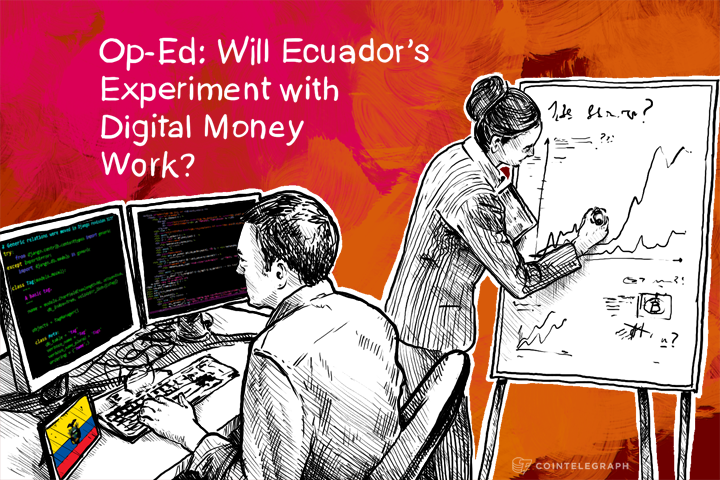The tiny South American nation of Ecuador has been an economic wasteland for many years. The problem of inflation became so bad that by the year 2000 the country was forced to abandon its currency, the Sucre, and switch to the dollar. This had the effect of preventing the government from printing money at will, which was one of the main causes of the near hyper-inflation suffered by the country. Ecuador tried raising taxes in 2010 to raise revenue but this dragged the economy further down as business began to leave for greener pastures. Now the country is planning an experiment that will likely return that power to them and end with disastrous results.
The experiment will begin in the BCE, Ecuador’s central bank. The plan is for bank employees to pay for items on the snack cart with their cell phone or tablet instead of cash. Previously item costs were deducted from the monthly payroll but now payments will be instantly deducted. The idea is that because mobile payment systems have worked so well from Scandinavia to Sub Saharan Africa that this success will occur in Ecuador as well and help rebuild the nation’s economy. The problem with this idea is that the situation in Scandinavia and Africa are far different than the situation in Ecuador.
Scandinavia had a strong economy to begin with and a well-developed technology infrastructure. Mobile payment success was achieved because the area has a high per capita income. The problem in sub Saharan Africa is different however. There are high income disparity levels between the rich and the poor and technical infrastructures, especially in the rural areas, is sparse and banking services nearly non-existent. But much of the success that comes from mobile payment systems, especially in West Africa, comes from Bitcoin. One of the biggest success stories in West Africa is Nigeria and there is a thriving Bitcoin community there. Nigerians love Bitcoin because they can avoid high banking and remittance fees because many of them receive aid from families and friends that have immigrated.
Ecuador however has an entirely different situation. Ecuadorian immigrants are few when compared to West African and remittance fees are not a huge issue for the population. The other cases of mobile payments successes were structured differently. In Scandinavia it was operated by private industry and in West Africa it is either private industry or a combination of government and commercial interests that offer and administration. But in Ecuador the government will be in total control of the entire program.
When the Ecuadoran economy failed after a series of bank disasters the government attempted to solve the problem in the way that most governments do, i.e. printing money. This and other factors such as fleeing businesses caused inflation to grow out of control. The government was forced to adopt the US dollar as its currency but this meant that the Ecuadorian government had no control over its own money supply. This is a problem faced by several countries in South and Central America. While the adoption of the dollar probably saved the country from complete economic disaster the position of the government in Quito was dependent on decision made in Washington and Wall Street.
Quito has already tried to stave off any competition, possibly in preparation for its own digital currency, in July when it became only the second nation in the Western Hemisphere to completely ban Bitcoin. This same Bill called for the creation of a national digital currency that will be backed by the Ecuadorian Central Bank. The statement issued after the Bill’s passage says:
“Electronic money will stimulate the economy; it will be possible to attract more Ecuadorian citizens, especially those who do not have checking or savings accounts and credit cards alone. The electronic currency will be backed by the assets of the Central Bank of Ecuador.”
The meaning behind this piece of legislation is quite clear: Digital currencies are wonderful as long as centralized controls exist. The government claims that the program will enable citizens to receive banking services more easily but the fact is that, besides Bitcoin, there are also programs being sponsored by banks to help in Ecuador are growing economy. The BANCO SOLIDARIO S.A. has a current program that offers microloans to small business ventures in Ecuador, along with other programs.
In other words it seems like this particular move by the politicians in Quito are merely seeking a way to regain control of their ability to print money and control the economy. Unlike cryptocurrencies which have a maximum production limit a government controlled money system is simply a blank check for corruption to flourish. The plan gives the BCE authority to issue “electronic currency” that is the equivalent of US dollars and can be converted easily. But while the administration claims that this currency will be backed by cash and other liquid assets in the BCE there was no indication as to how they would cover that and the expected $6.8 billion budget shortfall, especially since budget shortfalls are the most tempting reason to print more money.


